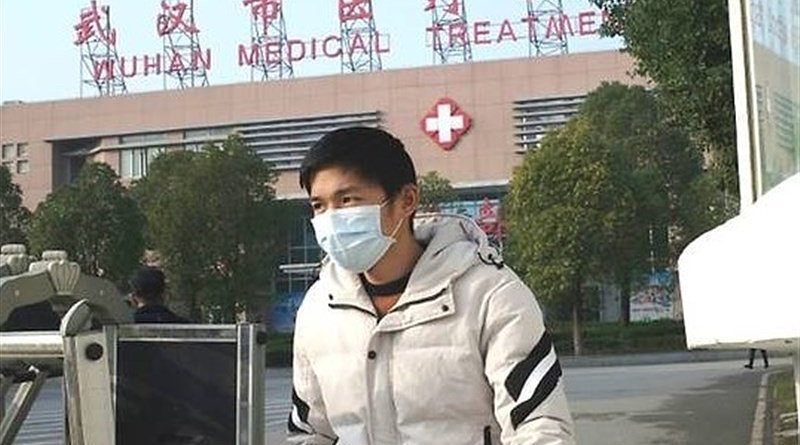Good Hygiene Key To Preventing Spread Of Coronavirus – Analysis
China has said the coronavirus outbreak is its worst health emergency and, with Italy and Iran’s latest news, plus the spread to other countries, the medical implications are being weighed up across the board.
Unsurprisingly, the transmission of unreliable information across social media is, at times, irresponsible. Medical professionals are most concerned by disinformation regarding the origins of COVID-19. The pathogen’s spread and its impact on global health and well-being are notable, but also important are concerns over mental health and stigma.
Medical scientists who specialize in pandemics, public health professionals and medical professionals are pointing out that China, in particular, is working diligently and effectively to rapidly identify the pathogen behind this outbreak, put in place significant measures to reduce its impact, and share the results transparently with the global health community. This effort is ongoing and it should be noted that almost 2,000 Chinese medical workers have been infected by COVID-19, and some have died.
The rapid, open and transparent sharing of data on this outbreak is now being threatened by rumors and misinformation surrounding its origins. Scientists are strongly condemning conspiracy theories suggesting that COVID-19 does not have a natural origin. Scientists from multiple countries have published and analyzed genomes of the causative agent and concluded that this coronavirus originated in wildlife, as have many other emerging pathogens. It’s called nature.
Nature’s outbreak is raising questions among the medical community regarding best practices to control the spread, given there is no vaccine and the effectiveness of antiviral medicine is unproven. What needs to be done is better hygiene in terms of public health measures and etiquette, such as staying at home when taken ill and washing hands. To be sure, the outbreak confronts front-line clinicians and public health authorities and these groups must work together to educate the public by providing accurate and up-to-date information, and by taking care of patients with respiratory illness in a timely and effective manner. Meanwhile, the public is going to have to help with awareness through community outreach.
Medical professionals are asking if a respiratory virus that is both transmissible and severe can be contained. In preparation for an influenza pandemic, for example, the US Department of Health and Human Services’ Pandemic Influenza Plan includes a combination of non-pharmaceutical (border and school closings, infection control measures) and pharmaceutical (antiviral prophylaxis and vaccines) interventions, which are meant to be used in combination to interrupt or slow transmission. Despite the implementation of some of these interventions, the 2009 swine flu H1N1 pandemic spread to 120 countries in three months.
The same medical professionals also ask: Is the world ready for a respiratory virus with high transmissibility and severity? After the 2013 avian flu H7N9 was identified in China, modeling articles described the effect of, and level of preparedness for, a severe, single-wave pandemic in the US. In scenarios that used clinical attack rates without a vaccine, school closures would be unlikely to affect what now includes asymptomatic transmission.
Doctors with experience in the emergence of Middle East respiratory syndrome are part of the effort to tackle COVID-19 as the disease spreads in parts of the Gulf. They bring knowledge of isolation techniques and medical treatment for those infected, as well as preparedness plans that include a surveillance plan, laboratory testing, and contact tracing guidance. Infection control guidance was developed for use in health care settings and traveler guidance. Remember, this disease is about the spread and radius of the infection.
In the US, the Centers for Disease Control (CDC) is sending test kits so states can test samples from people who are suspected to be infected. For now, the CDC has opened a second lab and is working out further distribution. Stocking up on hospital worker protection equipment to keep people safe if they have to attend to patients infected with COVID-19 is ongoing because of the infection spread and rate. This cold spreads through droplets from coughing, sneezing or anything that aerosolizes the COVID-19. Doctors are also considering the so-called attrition rate among their own staff during the infection spread. Their conclusion is that there needs to be an adequate plan of rotation on this front.
As is typical, physician practices and hospitals are seeing an uptick in flu cases. To combat this, patients are told to follow time-tested preventive habits. The basics around prevention are always important, beginning with staying away from people who are sick and telling parents to keep sick children home from school. Furthermore, medical professionals say that wearing a mask will derive little benefit. The CDC does not recommend that people wear face masks to protect themselves from respiratory viruses, including COVID-19.
Overall, medical professionals are on the front line on a number of different fronts fighting COVID-19, so that the treatment phase of the spread will be methodically thought out and that the campaign is sustained during the course of the illness spread, which may be up to a year, depending on the best practices.

